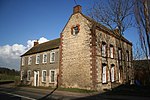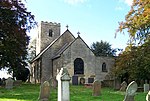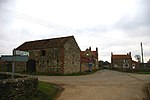Caenby Corner

Caenby Corner is a small area in the West Lindsey district of Lincolnshire, England, at the roundabout junction of the A15 and A631 roads. Close to the village of Caenby, it is situated on what was a major Roman road known as Ermine Street leading from London to the North of England. The junction is 10 miles (16 km) north from the city and county town of Lincoln. It is in the civil parish of Glentworth. On Caenby Corner roundabout is a filling station with shop and separate coffee shop, a private residence and the closed Moncks Arms hotel with adjacent transport cafe and lorry park. The hotel had for many years been derelict, but in 2007 there were plans to redevelop it. Despite the re-cladding to the outside of the building, the hotel has never re-opened.
Excerpt from the Wikipedia article Caenby Corner (License: CC BY-SA 3.0, Authors, Images).Caenby Corner
A631, West Lindsey
Geographical coordinates (GPS) Address Nearby Places Show on map
Geographical coordinates (GPS)
| Latitude | Longitude |
|---|---|
| N 53.394634 ° | E -0.552797 ° |
Address
A631
DN21 5TY West Lindsey
England, United Kingdom
Open on Google Maps











